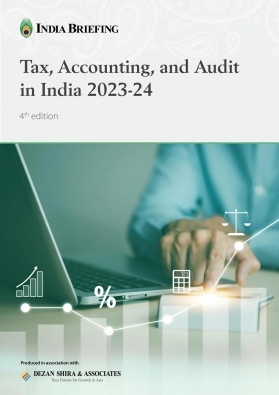India Amends Mining Law to Allow Private Sector Participation in Critical Mineral Exploration
India’s Mines and Minerals (Development and Regulation) Amendment Bill, 2023 signals a strategic shift towards leveraging private sector expertise to unlock the country’s untapped mineral potential. The bill identifies six minerals, including lithium, as “critical and strategic,” previously reserved for government-owned entities.
India wants to secure its critical mineral supply chains and is ambitious about its use of clean energy technologies. In that context, the bill’s provisions will enable collaboration between public and private sector stakeholders towards sustainable resource development. As global supply chains face vulnerabilities, the need for better access to domestic mineral resources is necessary. The Mines and Minerals Amendment Bill seeks to replicate successful models like Australia’s by introducing exploration licenses (EL) for private firms.
The Mines and Minerals (Development and Regulation) Amendment Bill, 2023, has been recently approved by the Indian Parliament. The new bill seeks to amend the Mines and Minerals (Development and Regulation) (MMDR) Act of 1957, with the primary goal of encouraging private sector participation in the exploration of essential and deep-seated minerals within the nation. This bill designates six minerals, including lithium, which is crucial for electric vehicle batteries and energy storage systems, as “critical and strategic” minerals. While India currently possesses around six percent of the world’s rare earth reserves, its contribution to global output stands at just one percent.
Beyond their relevance to energy-related minerals, these resources play a pivotal role in a nation’s manufacturing, infrastructure, and technological advancement. Their significance is further underscored as countries, India included, strive to attain net-zero carbon emissions. As emphasized by a World Bank study, the demand for essential metals like lithium and cobalt, integral to applications ranging from semiconductors to aerospace equipment and telecommunications technologies, is projected to experience substantial growth by 2050.
Critical minerals are fundamental natural resources crucial for diverse industries, such as technology, manufacturing, and clean energy. Examples include lithium, nickel, and cobalt.
Deep-seated minerals, on the other hand, pertain to minerals located deep within the Earth’s crust, often presenting greater exploration and extraction challenges compared to minerals closer to the surface. Gold, copper, and diamonds are illustrative examples of deep-seated minerals.
Addressing import dependency and supply chain vulnerabilities
Given the pressing need to address import dependency and the vulnerabilities arising from concentrated supply chains, the significance of this bill becomes paramount. In fact, the enactment of this new legislation forms part of a broader endeavor to establish resilience within critical mineral supply chains. It’s noteworthy that India has taken proactive measures in this direction, unveiling a list of 30 critical minerals in June 2023 that hold strategic importance for the nation’s economic progress and national security.
Moreover, India has recently aligned itself with the Mineral Security Partnership (MSP), a collaborative initiative joined by major economies like the United States (US), the United Kingdom (UK), and the European Union (EU). These influential nations have embarked on initiatives to bolster the robustness of their critical mineral supply chains, with a central focus on reducing dependence on sources like China. The shared objective is to ensure a more reliable and secure availability of these vital resources.
Collectively, through the MSP, these countries are dedicated to cultivating resilience in mineral supply chains and mitigating vulnerabilities in the availability of essential minerals. Their concerted efforts encompass strategies such as formulating tailored lists of critical minerals based on unique economic needs and assessing the associated supply risks.
The critical minerals sector, particularly exemplified by India’s heavy reliance on external sources for minerals like lithium and cobalt, underscores the urgency of involving the private sector. Presently, India’s complete dependence on imports from countries like China, Russia, Australia, South Africa, and the US to meet its critical mineral demands emphasizes the necessity for change. These essential minerals, encompassing lithium, cobalt, nickel, niobium, beryllium, and tantalum, play pivotal roles across diverse industries.
The extent of India’s import reliance is exemplified by its expenditures in the financial year (FY) 2021-2022 alone. During this period, India imported lithium products valued at US$22.15 million. Notably, a substantial segment of these imports consisted of 548.618 million units of lithium-ion batteries, entailing a considerable outlay of US$1,791.35 million.
Furthermore, the challenge lies in exploring and extracting deep-seated minerals like gold, silver, copper, zinc, lead, nickel, cobalt, platinum group elements (PGEs), and diamonds. These processes are notably intricate and capital-intensive, especially when contrasted with the more accessible surficial or bulk minerals. As a result, India’s reliance on imports for these resources remains pronounced.
For instance, in FY 2022-23, the country imported nearly 1.2 million tons of copper and its concentrates, with an aggregate value surpassing INR 270 billion (US$3.25 billion), as documented by official records. Similarly, the import of nickel totaled 32,298.21 tons, corresponding to a value of INR 65.49 billion (US$788.59 million).
Why private sector participation is necessary in critical and deep-seated mineral exploration
Private sector participation is crucial for the exploration of critical and deep-seated minerals for several reasons:
- Specialized expertise and investment: Exploration for critical and deep-seated minerals demands specialized technical knowledge, advanced exploration techniques, and substantial financial investment. Private sector companies often possess the expertise and resources needed for these complex and high-risk operations, which can lead to more effective and efficient exploration efforts.
- Accelerated exploration: Private companies, particularly junior explorers, are often more agile and willing to take risks in exploring uncharted territories. Their involvement can lead to a higher number of exploration projects, thereby accelerating the pace of mineral discovery.
- Diversification of funding sources: Government agencies may have limited budgets for mineral exploration. Private sector involvement diversifies funding sources, reducing the financial burden on governments and allowing for greater investment in exploration activities.
- Innovative technologies: Private companies are more likely to adopt and develop cutting-edge exploration technologies and methodologies. Their innovation can lead to breakthroughs in mineral discovery and extraction.
- Competition and efficiency: Private sector participation introduces competition, which can drive efficiency and better allocation of resources. This can result in more cost-effective exploration processes.
- Job creation and economic growth: Exploration activities, when successful, lead to the establishment of mines and associated infrastructure, creating jobs and contributing to economic growth.
- Reduced government burden: Government agencies may not have the capacity to explore and develop all potential mineral resources. Private sector involvement relieves the government’s burden and allows them to focus on regulatory oversight and environmental management.
- Global best practices: Private companies bring international best practices and experience to the exploration process, helping to align exploration activities with global standards and norms.
Existing challenges in India’s mining sector
Renowned organizations, such as the Atomic Minerals Directorate for Exploration and Research and the Centre for Social and Economic Progress (CESP), say that India’s geological potential is akin to mineral-rich regions like Western Australia and Eastern Africa. Although India possesses promising geological conditions, the pathway to discovering viable mineral reserves necessitates effective exploration strategies, ranging from conducting preliminary surveys to detailed assessments.
However, India’s exploration endeavors are constrained by a combination of historical, regulatory, and policy factors. As a result, exploration activities have thus far covered only a mere 10 percent of its Obvious Geological Potential (OGP), and this figure represents less than two percent of the total extraction. Also, India’s investment in mineral exploration remains modest, accounting for less than one percent of the global mineral exploration budget.
Exploration requires techniques like aerial surveys, geological mapping, and geochemical analyses. It is a highly specialized, time-intensive, and monetarily risky operation, with less than one percent of explored projects resulting in commercially viable mines. A majority of exploration projects have been executed by governmental bodies, such as the Geological Survey of India and Mineral Exploration Corporation Limited (MECL). This deficiency has led to a scarcity of substantial mineral discoveries in recent decades.
While the government introduced various provisions in the MMDR Act, 1957, to involve private companies through mechanisms like First Come First Served (FCFS) and Prospecting Licenses (PLs), Mining Leases (ML) or Reconnaissance Permits (RPs), concerns about transparency and misuse led to a shift towards auction-based allocation. The Evidence of Mineral Content (EMT) rule, intended to ensure fairness, inadvertently limited private sector participation by only allowing auction of projects with prior government exploration. This created barriers for private firms to enter early-stage exploration.
Despite a few forward initiatives, such as allowing private firms to register as exploration agencies and receive funding from the National Mineral Exploration Trust (NMET), significant private sector involvement in exploration did not materialize.
The proposed new Bill seeks to address these challenges by aligning India’s exploration processes with those of developed countries, drawing inspiration from successful models like Australia’s. By enabling private sector capacity and investment in exploration, India aims to unlock its mineral potential, accelerate the pace of discovery, and ultimately contribute to the country’s economic growth and development.
How India’s Mines and Minerals Bill 2023 encourages private players: Key provisions
The Mines and Minerals (Development and Regulation) Amendment Bill, 2023, introduces significant provisions aimed at fostering private sector engagement, which contrast with the existing MMDR Act of 1957. Some of the key provisions in comparison include:
- Inclusion of sub-surface activities in reconnaissance: The MMDR Act, as amended in 2015, currently defines reconnaissance as preliminary prospecting, encompassing aerial surveys, geophysical, and geochemical surveys, and geological mapping. The Mines and Minerals Bill, 2023, expands reconnaissance to include activities like pitting, trenching, drilling, and sub-surface excavation that were previously prohibited.
- Introduction of exploration license (EL): The MMDR Act provides permits for reconnaissance, prospecting, mining leases, and composite licenses. The Amendment Bill introduces the concept of an exploration license, allowing reconnaissance or prospecting, or both, for specified minerals. This license covers 29 minerals listed in the Seventh Schedule, which includes precious metals like gold, silver, base metals like copper and nickel, and even atomic minerals.
- Declassification of atomic minerals: Six atomic minerals, previously restricted to government entities, are declassified as atomic minerals under the Bill. These minerals—beryl, beryllium, lithium, niobium, titanium, tantalum, and zirconium—can now be explored and prospected by private players as well.
- Auction mechanism for exploration licenses: Exploration licenses will be granted through competitive bidding by state governments. The federal government will define the auction framework, rules, terms, and bidding parameters.
- Exploration license validity and area: The exploration license is issued for five years, extendable by two years upon application. Activities under a single exploration license can be conducted within an area of up to 1,000 square kilometers. After the initial three years, up to 25 percent of the originally authorized area can be retained by the licensee, subject to submission of reasons.
- Geological reports and incentives: The licensee must submit a geological report within three months of exploration completion or license expiration. If proven resources are found, the state government must conduct an auction for a mining lease within six months of the report. The licensee is entitled to a share in the auction value of the mining lease for the prospected mineral, with the share defined by the central government.
- Federal government-led auctions for critical and strategic minerals: The federal government will conduct auctions for composite licenses and mining leases of specified critical and strategic minerals, including lithium, cobalt, nickel, phosphate, potash, and tin. However, the state government will continue to grant concessions.
Industry concerns regarding the Mines and Minerals Bill, 2023
Industry experts have raised certain apprehensions regarding the Mines and Minerals Bill, 2023. These include:
- Revenue generation mechanism: Private companies’ revenue generation relies on a share of the premium paid by mining entities. However, this revenue realization is contingent upon successfully discovering a mine and subsequently auctioning it. The 2023 Amendment Bill mandates mining lease auctions within six months if mineral resources are proven post-exploration. This timeline may not align with historical trends, potentially leading to delays or even non-materialization of auctions due to clearance timelines and deposit complexities. For example, the Ghorabhurani-Sagasahi Iron Ore Mine’s auction in 2016 took nearly six years to commence production due to clearances, illustrating the possible time-consuming nature of the auction process.
- Uncertainty in revenue: The lack of clarity in revenue prospects during exploration poses a significant challenge. Private explorers will not have a clear understanding of the revenue they will receive until the premium from a successful mine auction becomes known. This uncertainty might discourage private sector participation, as companies would prefer clearer revenue visibility during exploration.
- Challenges with auction-based allocation: According to economist Dhiraj Nayyar, auctioning unexplored resources presents challenges. Auctioning is more feasible when dealing with resources of known value, such as discovered mineral deposits. Auctioning unexplored resources is complex due to the inherent unpredictability in estimating the value of undiscovered mineral resources.
- Capital investment assurance: A 2012 Supreme Court ruling emphasizes that companies are more likely to invest significantly in exploration and mining contracts if they are assured of utilizing discovered resources effectively. The 2023 Bill restricts private explorers from directly selling their discoveries, instead, allowing government auctioning. Private explorers are entitled only to a share of the premium at an unspecified stage. This differs from global best practices where private explorers have the option to directly sell their discoveries to mining entities, potentially affecting investment incentives.
About Us
India Briefing is produced by Dezan Shira & Associates. The firm assists foreign investors throughout Asia from offices across the world, including in Delhi and Mumbai. Readers may write to india@dezshira.com for more support on doing business in India.
We also maintain offices or have alliance partners assisting foreign investors in Indonesia, Singapore, Vietnam, Philippines, Malaysia, Thailand, Italy, Germany, and the United States, in addition to practices in Bangladesh and Russia.
- Previous Article India-Australia Trade Negotiations for a CECA: What We Know So Far
- Next Article India Introduces Taxation Changes for High-Premium Life Insurance Policies









